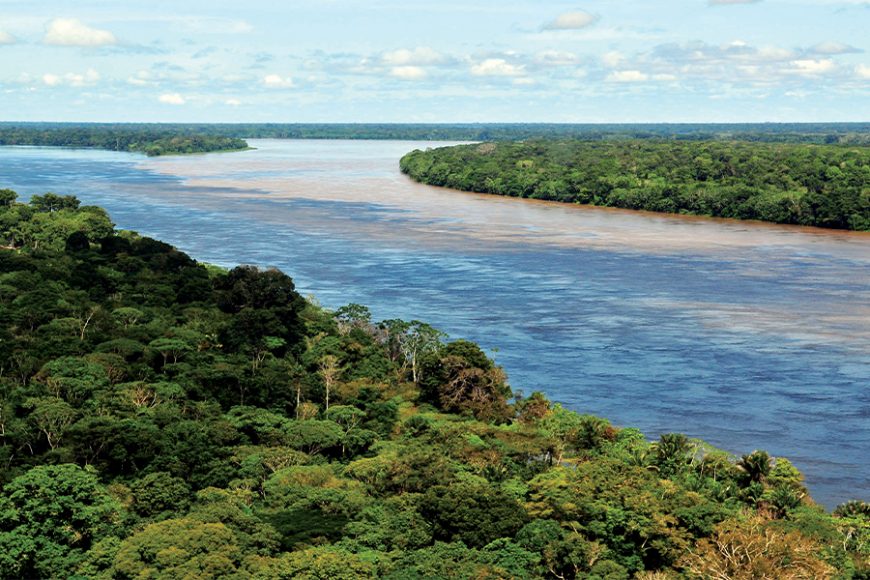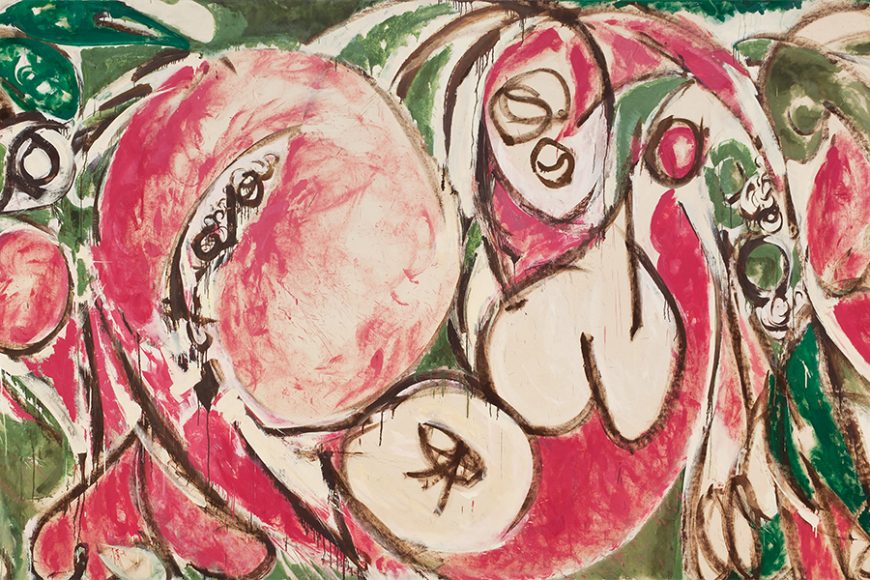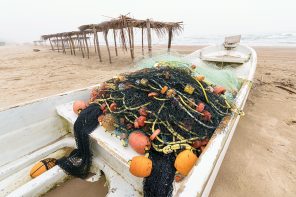Such is the power of a certain tech/retail behemoth that when you Google “Amazon,” the Seattle-based multinational pops up.
But founding CEO and President Jeff Bezos named his company after the Amazon River, thinking the world’s largest river a fitting omen in 1994 for what would become the world’s biggest bookstore. The river in turn was named by 16th-century conquistador Francisco de Orellana, whose expedition was attacked by the Tapuyas tribe of bare-breasted women warriors (perhaps merely long-haired men in grass skirts) that conjured for him the Amazons of ancient Greek myth.
Now “Amazon” — as in the river that snakes through South America and the idea of bold women — is having a moment in our area, spotlighting a word and a concept, powerful females.
Through Oct. 3, the Greenwich Arts Council presents “A River Runs Through It: A Tribute to the Colors and Vitality of the Amazon River,” a show of paintings and sculptures by local artists celebrating the 2.6 million-square-mile area that is home to 30 million people and hundreds of thousands of species of flora and fauna, including 7,000 species of butterflies and 5,600 species of freshwater fish. The exhibit, mounted in part to commemorate Amazon Day (Sept. 5), the founding of the Brazilian state of Amazonas, arrived at a poignantly telling moment, with world leaders playing the blame game as the Amazon rainforest, which supplies 20 percent of Earth’s oxygen, was burning.
“The Greenwich Arts Council wanted to draw attention to the area and highlight awareness of its environmental challenges in a show whose art has been inspired by the region,” says Sarah Balcombe, the council’s assistant curator.
Three days after this exhibition closes, the Katonah Museum of Art opens an exhibit that plumbs a seminal movement and group of women artists who helped make New York the capital of the art world in the postwar era. “Sparkling Amazons: Abstract Expressionist Women of the 9th St. Show” (Oct. 6-Jan. 26) features the works of Elaine de Kooning; Perle Fine; Helen Frankenthaler, who lived in Darien; Grace Hartigan; Guitou Knoop; Lee Krasner, subject of a recent London retrospective; Joan Mitchell; Anne Ryan; Sonia Sekula; Day Schnabel; and Jean Steubing — the 11 women who exhibited their vibrantly colored and shaped paintings as part of the landmark 1951 exhibit of more than 60 artists.
“It was one of the most important avant-garde shows,” says Michael Gitlitz, the Katonah Museum’s executive director, “the equal in effect of the first Impressionist show (1874) and the 1913 Armory Show,” which woke America up to Modernism. He adds that the museum sees a link between this exhibit and its own “sparkling amazons” — the women who have helped guide the museum from its foundation as the Katonah Gallery on the top floor of the Katonah Village Library in 1954, including gallery creator Inge Brouard Brown, former Katonah Museum board President Betty Himmel and former KMA education director Yvonne Pollack.
But why call the show “Sparkling Amazons”? Michele Wije, the KMA’s associate curator, says it refers to an observation by critic Thomas Hess, an editor of Art News in the 1950s. Writing of Elaine de Kooning’s portraits in 1975, Hess observed that she “was one of the sparkling ‘Amazons,’ who emerged in the flowering of American painting after World War II and into the 1950s, along with Helen Frankenthaler, Joan Mitchell … Grace Hartigan and many others.”
“We ourselves have grappled with the question of whether his meaning might’ve been paternalistic and chauvinistic,” Gitlitz adds. “We concluded that it was meant to represent the spirit of these bold women.”
Indeed, such is the loaded nature of the term “Amazon,” which has at times been synonymous with the word “virago,” meaning a woman of masculine strength and/or heroism, a female warrior, but also one of domineering, violent temper. (In the early-20th century, the most militant suffragists were referred to in the media as “Amazons.”)
The early Greeks — who transformed them into a mythic matriarchal tribe after the Scythian and Sarmatian horsewomen who fought and hunted alongside their men — couldn’t resist romanticizing and eroticizing him. The mythic Amazons only engaged with men in warfare or procreation, giving the men any male children they bore, keeping only the female. They cauterized their right breasts to make their right arms strong and free for battle. (The word “Amazon” comes from the Greek meaning “without a breast.”) But in artwork, the right breast or both were simply bared, while in stories they tangled with the Greeks’ greatest heroes — becoming a fatal attraction for Achilles, (Queen Penthesilea), seeking a child with Alexander the Great (Queen Thalestris), helping Hercules with his ninth labor and even (heaven forbid) marrying the two-timing Theseus, (Queen Hippolyta).
The idea, though, of a society of women who could tame men — and yet might still themselves be tamed — added an erotic charge to the Nazis’ “Night of the Amazons,” propagandistic events of the late 1930s featuring topless female performers, and American B-movies of the 1940s and ’50s, including “Tarzan and the Amazons.”
But the advent of the cult classic “Xena: Warrior Princess” (1995-2001) and the LGBTQ+ movement, along with such scholarly works as Adrienne Mayor’s “The Amazons: Lives and Legends of Warrior Women Across the Ancient World” (Princeton University Press, 2015), reclaimed the idea of the Amazons as strong, skilled, independent women. This was central to the 2017 movie “Wonder Woman,” a critical and financial success that made Israeli actress Gal Gadot a breakout star even as its women-only screenings proved a controversial marketing ploy.
Now thanks to the KMA exhibit, celebrating a group whose members saw themselves as artists rather than women artists, the Amazons — who gave their name to a river and, indirectly, a corporate giant — sparkle anew.
“Sparkling Amazons” is accompanied by a catalog made possible by The Pollock-Krasner Foundation. For more, visit katonahmuseum.org.






